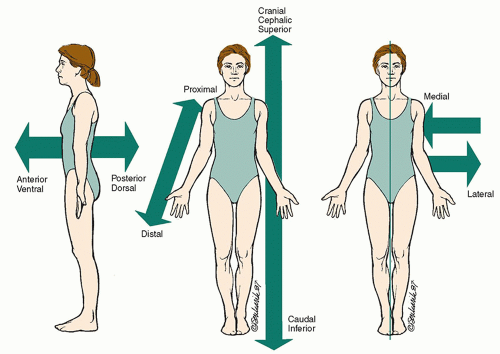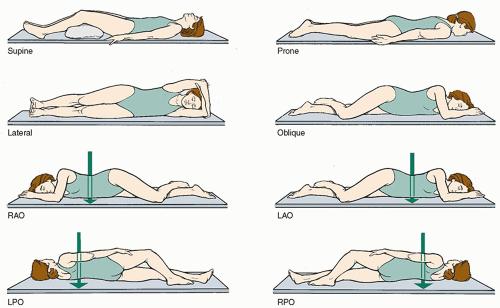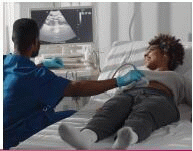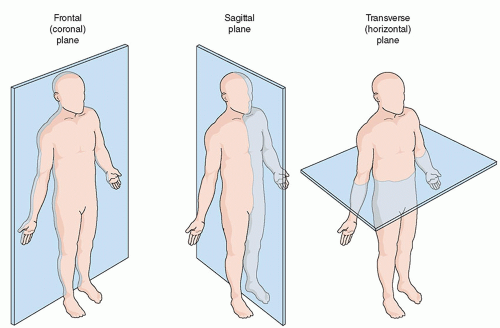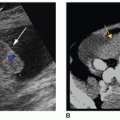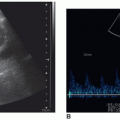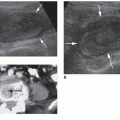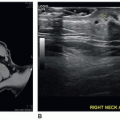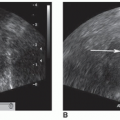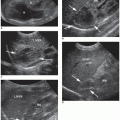Positional terms refer to the patient’s position relative to the surrounding space. For sonographic examinations, the patient position is described relative to the scanning table or bed (
Table 2-2 and
Fig. 2-3). In clinical practice, patients are scanned in a recumbent, semierect (reverse Trendelenburg or Fowler), or sitting position. On occasion, patients may be placed in other positions, such as the Trendelenburg (head lowered) or standing position, to obtain unobscured images of the area of interest. Sonographers frequently convey information on patient position and transducer placement simultaneously. This terminology most likely was adopted from radiography, where it describes the path of the X-ray beam through the patient’s body (
projection), which results in a radiographic image (
view). There is no evidence in the literature that this nomenclature has been adopted as a professional standard for sonographic imaging. Describing sonograms using the terms
projection or
view should be avoided. It is more accurate to describe the sonography image by stating the anatomic plane visualized, owing to the
transducer’s orientation (i.e., transverse). A more specific description of the image would include both the anatomic plane and the patient position (i.e., transverse, oblique).
